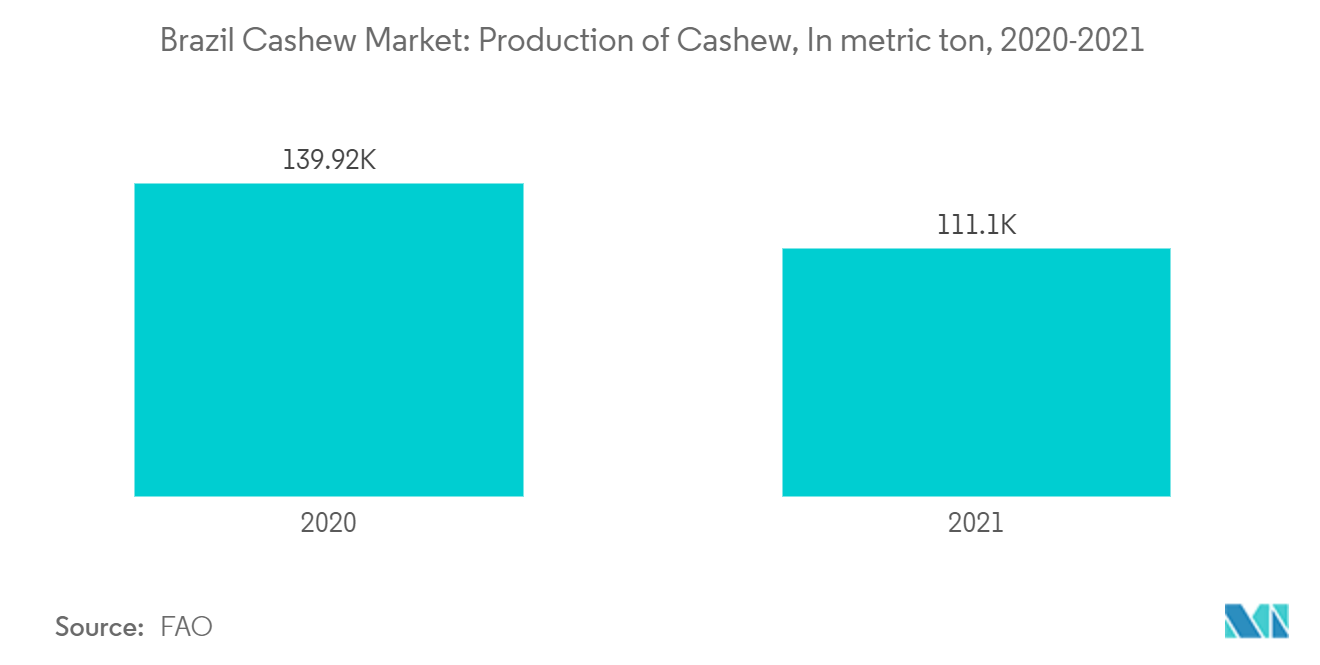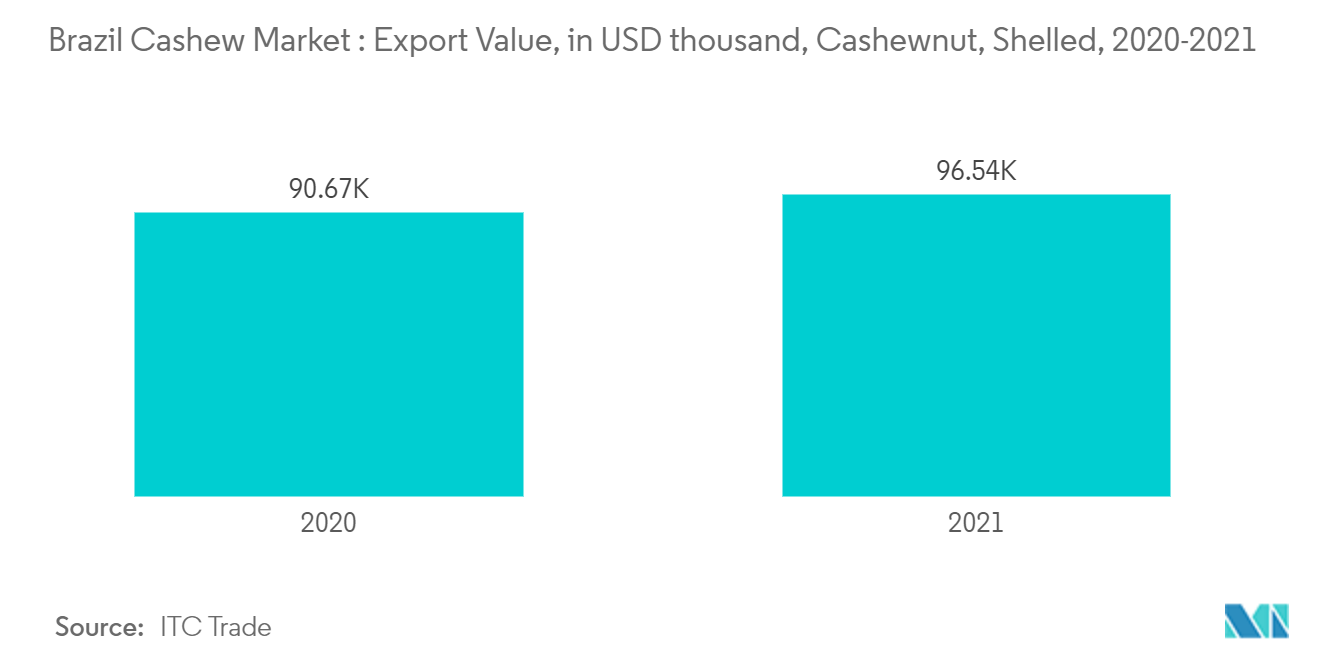Market Trends of Brazil Cashew Industry
Increasing Cashew Production owing to various Food Applications
Cashews are mostly consumed as a snack, raw, roasted, salted, or flavored, in baked goods and confectionery. Cashews are also used as an ingredient in Indian sweets, savories, and cooking. The cashew nut is native to Northeastern Brazil. It is the origin of the cashew tree. Brazil is one of the major producers of cashew globally. The cashew tree does not require extensive irrigation or water usage; it is environmentally friendly as the trees can grow in poor soils and dry climatic conditions.
Currently, Brazil produces between 300-330,000MT of raw cashew nuts (equivalent to about 2.7 million MT cashew apples) per year, owing to its high demand in Brazil, stimulated by the continuing trend toward healthier nutrition and a strong preference for sustainably-produced foods. It is fuelled by the rapidly increasing request for healthy snack products, which, in turn, will boost the Brazilian cashew market during the forecast period.
About 12 percent of Brazilian cashew apples are processed, including juice extraction (8 percent). Other usages include fresh and dried fruit, jams, wines, candies, and animal feed made out of waste products. Brazil's cashew harvest takes place between late September and early January. As per FAO 2021, cashew nuts in shell production, accounted for 111,103MT, showing significant growth in the production of cashew in the region.

Brazil Leads in the Export of Cashews in Terms of Value
The export of cashews to other countries is stimulated by the increasing trend in local demand, owing to a focus on healthy nutrition and a strong preference for sustainably-produced foods, and fuelled by the rapidly increasing request for snack products. Given the strong correlation between cashew demand and prices, the price competitiveness of the Brazilian export is expected to depend on the cashew sector performance and facility of adaptation to the consumers' requirements. The export volume of cashew in 2021 was 14,912 metric ton. The United States is the biggest importer of cashew from Brazil. In 2021, other importers of cashew were Canada, Argentina, and Netherland.
The fruit is cultivated in many tropical regions where both the nuts and peduncles are extracted, processed, and sold to various countries. Cashew has various applications ranging from use as grain in animal and human diets to industrial applications of the highly-valued nut oil. The cashew originated in Brazil but is now cultivated extensively in all tropical areas. Over 14% of the domestic production is exported to all major markets, mostly as natural cashew kernels of all grades and sizes, part of which are bio-products.


